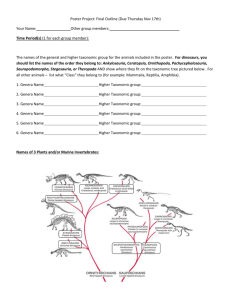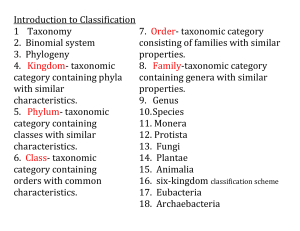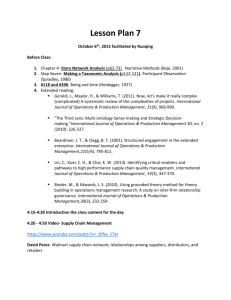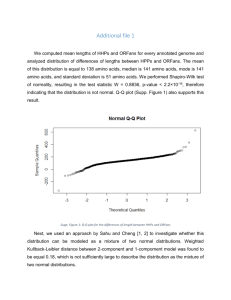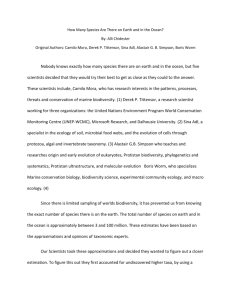taxonomic database component - EDIT Platform for Cybertaxonomy
advertisement
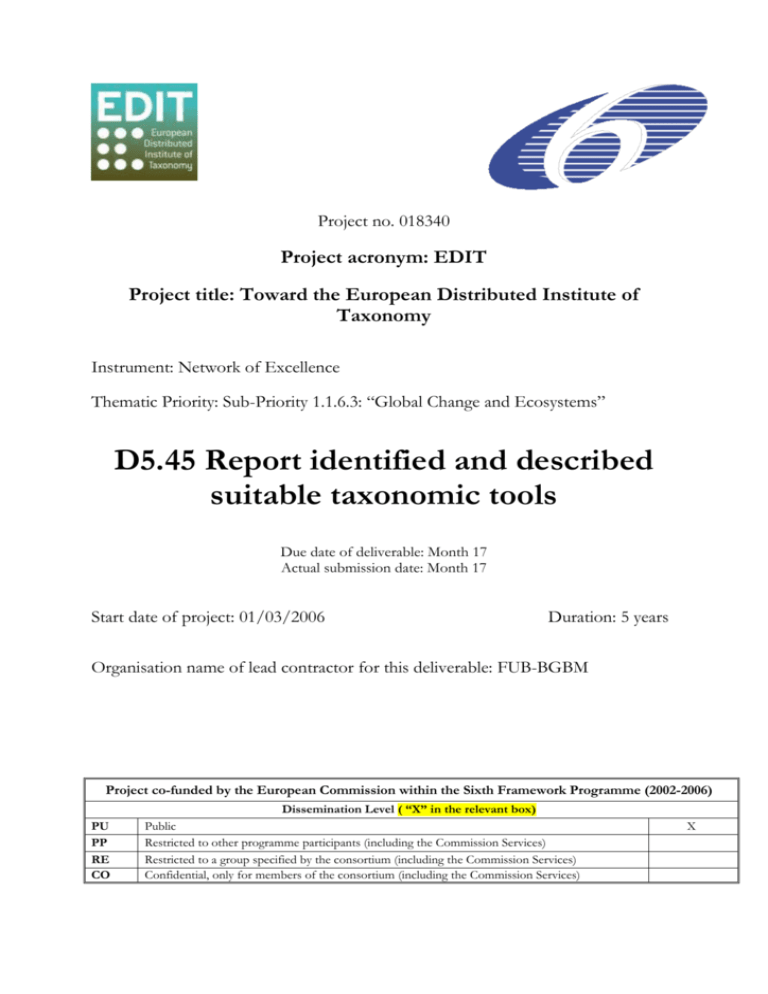
Project no. 018340 Project acronym: EDIT Project title: Toward the European Distributed Institute of Taxonomy Instrument: Network of Excellence Thematic Priority: Sub-Priority 1.1.6.3: “Global Change and Ecosystems” D5.45 Report identified and described suitable taxonomic tools Due date of deliverable: Month 17 Actual submission date: Month 17 Start date of project: 01/03/2006 Duration: 5 years Organisation name of lead contractor for this deliverable: FUB-BGBM Project co-funded by the European Commission within the Sixth Framework Programme (2002-2006) PU PP RE CO Dissemination Level ( “X” in the relevant box) Public Restricted to other programme participants (including the Commission Services) Restricted to a group specified by the consortium (including the Commission Services) Confidential, only for members of the consortium (including the Commission Services) X The EDIT Platform for Cybertaxonomy – taxonomic database component The initial EDIT work plan assumed that the Platform for Cybertaxonomy would be a set of loosely coupled taxonomic tools complying with certain information standards, which are to be defined by the project. Preferably, these tools are already existing ones rather than software, which had to be developed from scratch within the framework of EDIT. Therefore activities in work package 5 focus very much on the testing and assessment of software already in use and development capacities should be directed to extension and modification of selected solutions. This strategy was also planned for the taxonomic database components of the EDIT cybertaxonomic platform, which are the core data storages of taxonomic concepts, and names, which form the backbone of the taxonomic work process as well as the display of its results. However, an extensive discussion within work package 5 and with taxonomists of work package 6 and beyond turned out that the use of an existing taxonomic database system is not very promising as existing system are in most cases very closely tied to a limited taxonomic group and use a specific database management system. In particular the second issue is critical as many European taxonomic facilities have a strict policy regarding data management and storage technologies and will hardly move their existing data repositories to an additional technology simply because of a lack of technical capacities. Therefore, the taxonomic database component group decided to choose a radically different approach: In an open development process, an object-oriented “Common Data Model” (CDM) is developed taking into account several data models forming the basis for the known existing and prominent taxonomic database systems. The modelling process uses the Unified Modelling Language (UML). The Common Data Model will cover taxonomic names, concepts, literature and other references, descriptive data, and species level information such as distribution or conservation status (Fig. 1). The CDM will be implemented independently from a specific data storage solution using Hibernate, which means that EDIT partners can stay with their institutional decisions on the use of database management systems. Transformation tools and services will be provided to aid conversion of existing formats (e.g. TaxonX, TCS, etc.) into CDM and vice versa. The development of CDM is driven by an EDIT email list, which is open to all EDIT Partners and external contributors (https://webmail.mnhn.fr/wws/arc/cdm-edit). Presently, the model comprises packages for taxonomic names, references and publications, taxa (taxonomic concepts), agents, type designations and type specimens. Further background information and all versions of the revisionary taxonomy models can be visited in the work package 5 wiki system at http://dev.etaxonomy.eu/trac/wiki/CommonDataModel. The wiki gives also an overview of existing taxonomic information formats and example documents. The present state of the CDM UMLmodel is always available at http://dev.etaxonomy.eu/trac/wiki/CommonDataModel#UMLdocumentation. Fig. 1: CDM name package Six existing taxonomic data models have been taken into consideration. It was decided to publish the results of their analyses and assessments on the EDIT work package 5 Wiki system rather than a static report to reach the widest possible audience and to make sure that new findings can always be incorporated without producing and distributing additional documents. Up to now the following taxonomic information models have been analysed: LSID Vocabulary of the Taxonomic Databases Working Group (TDWG): http://dev.etaxonomy.eu/trac/wiki/TdwgLsidVocabularies TDWG Taxonomic Concept Scheme (TCS): http://dev.e-taxonomy.eu/trac/wiki/TCS Prometheus Taxonomic Model: http://dev.etaxonomy.eu/trac/wiki/Prometheus_Taxonomic_Model_Notes CATE data model: http://dev.etaxonomy.eu/trac/wiki/TaxonomicDataStandards#CATESoftware TAXIS data model: http://dev.etaxonomy.eu/trac/wiki/TaxonomicDataStandards#TaxisSoftware Mx data model: http://dev.etaxonomy.eu/trac/wiki/TaxonomicDataStandards#mxSoftware We believe that this selection covers a wide spectrum of taxonomist’s requirements and provides a sound basis for the specification of a common data model for the European Distributed Institute of Taxonomy, which will lead us for the first time to a truly integrated approach to taxonomic information processing.




